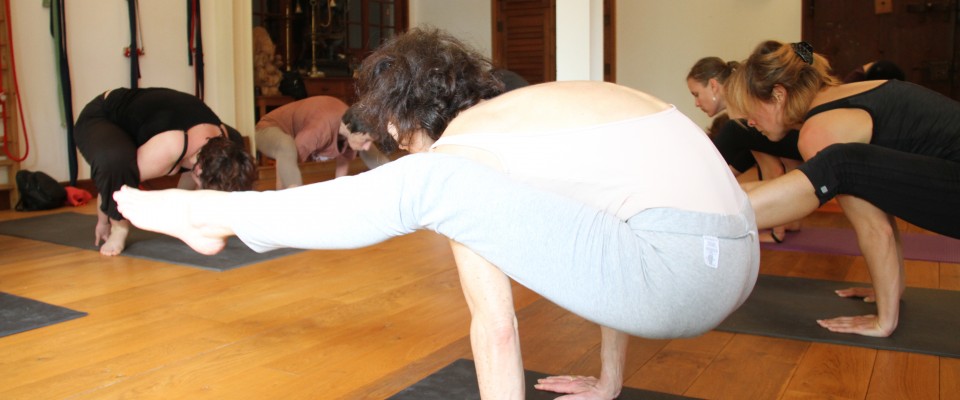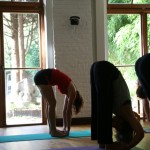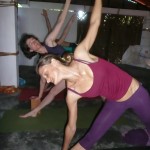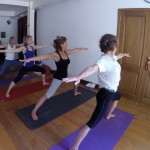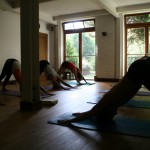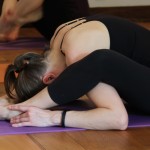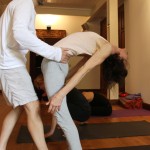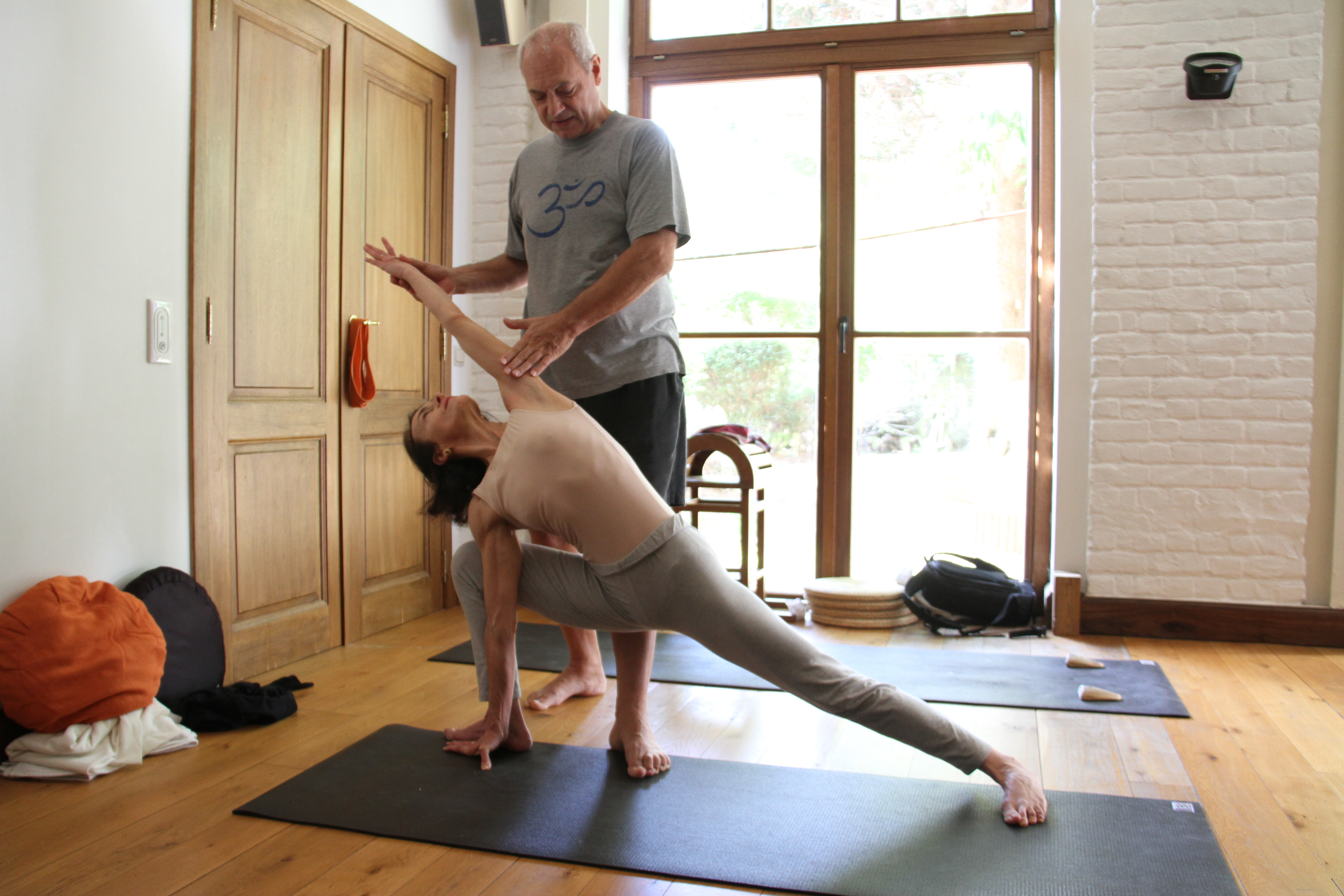Teacher : Louise
Level : beginner
Date/Time
Date(s) - 15/08/2019
19:30 to 21:00
Ashtanga Yoga Institute
610, Ch. d'Alsemberg
Brussels - Belgium
Ashtanga Yoga is the basic principle of all yoga (s)
Its 8 parts (ashtanga) are restrictions and observances to cultivate, postures to practice, discipline of the breath, abstraction of the senses, concentration, meditation and meditative contemplation.
“Ah, meditation … The world of yoga is divided into two camps: on the one hand, we have enthusiastic Hatha Yogi (s) who specialize in asana (s) and the other a group who fervently believe in meditation as a panacea for all evils “. Ramaswami, Nov 2009
- 1st series simplified, Pādānguṣṭhāsana
- 1st series, Utthita Trikoṇāsana
- Vīrabhadrāsana II
- 1st series simplified , Adho-Mukha-Śvānāsana
- 1st series simplified , Supta-Kūrmāsana
- 1st series simplified, Back Ben
Traditionally Yogis mention two sādhanā ((s) or two yogic procedures as preparations for meditation, which are the practice of āsana (s) and prāṇāyāma.The action of yoga postures (āsana (s)), is to reduce the “rajas” which is manifested by an agitation of the mind = the inability to stay focused for some appreciable time. There is another guna, “tamas” which is not useful during the practice of meditation, it is manifested by laziness, lethargy, heaviness, inertia. These two guna (raja & tamas) must be overcome if one wants to meditate.
Sri Patañjali advocates the practice of “prāṇāyāma” to reduce the effects of “Tamas”. He says that prāṇāyāma helps to reduce Āvaraṇa (tamas). The “prāṇāyāma” makes the mind capable of Dhāraṇā or the first stage of meditation.
In the course proposed by Jan, the emphasis is put on the practice of postural prāṇāyāma: “Ujjayi” to reduce “raja”, rhythm and vinyasa to avoid “tamas” and dṛṣṭi (s) to develop the concentration (Dhāraṇā).
It is therefore a meditation course in motion, practiced in silence. It is preferable to have memorized the sequence of the order of postures to participate.
The simplified primary series
It represents the basis of the Ashtanga Yoga practice: we will learn 40 postures out of the 70, which make up the primary series.
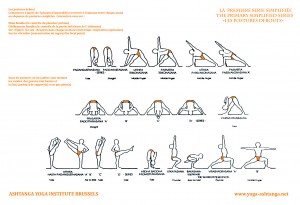
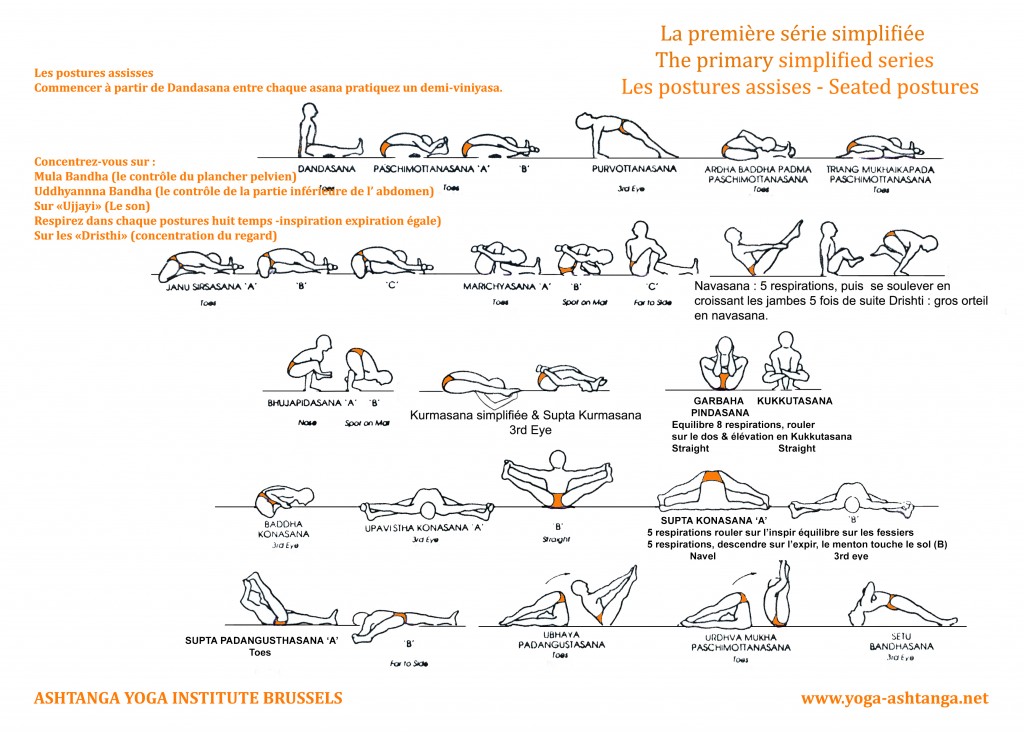
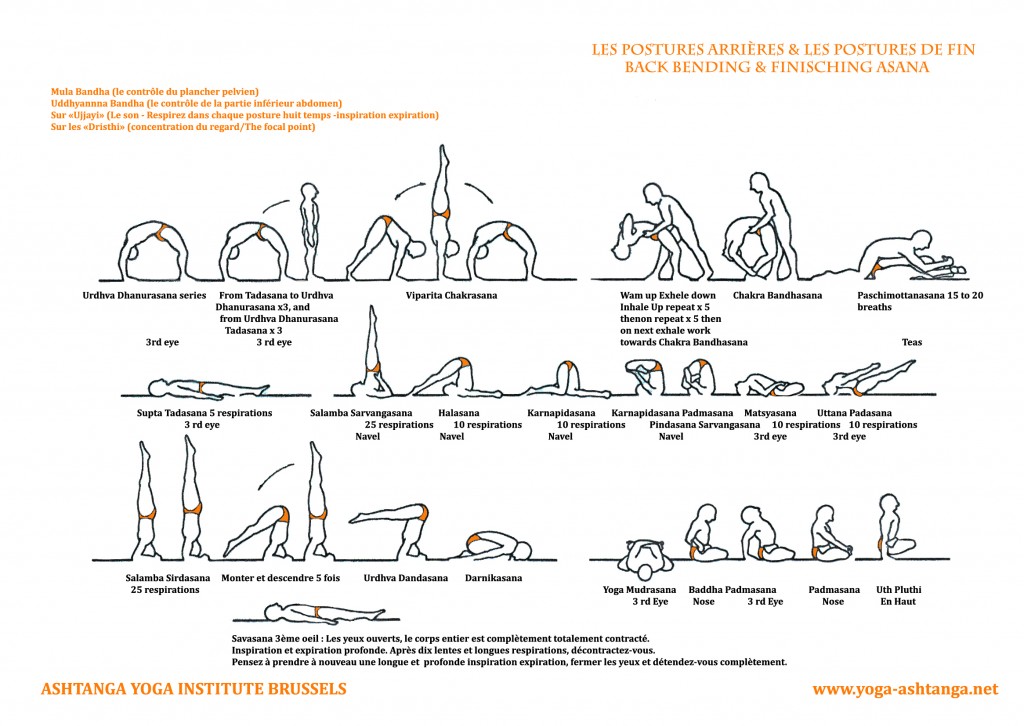
See the postures graph (seen in class)
The postures are linked to each other by the movements of the sun salutation (Sūryanamaskāra); it is is called the Vinyasa.
The Vinyasa, which links the postures together, will produce enough heat to clean and purify the different parts of your body (physical, energetic, subtle)
The gradual approach will enable you to easily connect with the primary series and will bring you the confidence you need to address the following ones.
Depending on your practice and breathing (seen in the introductory course) we will progressively add on some rhythm. You will go faster at you own pace.
List of postures of the first series The fundamental postures:
- Samasthiti
- Surya Namaskara A
- Surya Namaskara B
- Padangushtasana Padahastasana
- Utthita Trikonasana
- Parivritta Trikonasana
- Utthita Parshvakonasana
- Parivritta Parshvakonasana
- Prasarita Padottanasana A B C D
- Parshvottanasana
- Utthita Hasta Padangushtasana
- Ardha Baddha Padmottanasana
- Utkatanasana
- Virabhadrasana (A et B)
- Dandasana
- Paschimattanasana (3 types)
- Purvatanasana
- Ardha Baddha Padma Paschimattanasana
- Tiriangmukhaikapada Paschimattanasana
- Janu Shirshasana A B C
- Marichyasana A B C D
- Navasana
- Bhujapidasana
- Kurmasana
- Sutera Kurmasana
- Garbha Pindasana
- Kukkutasana
- Baddha Konasana
- Upavishta Konasana
- Supta Konasana
- Supta Padangushtasana
- Ubhaya Padangushtasana
- Urdhva Mukha Paschimattanasana
- Setu Bandhasana
The end postures
- Urdhva Dhanurasana
- Paschimattanasana
- Sarvangasana
- Halasana
- Karnapidasana
- Urdhva Padmasana Pindasana Matsyasana
- Uttana Padasana
- Shirshasana
- Baddha Padmasana
- Padmasana
- Uth Pluthi
- Shavasana
Practice benefits
- Channel your energy thanks to the control of your pelvic floor and of your abdominal area (Mūla bandha)
- Develop your concentration by fixing your eyes in a direction (drishti) while doing the postures (āsana).
- Breathing in harmony with the movement (Ujjãyi Prāṇāyāma)
- Increase your confidence
- Linking the postures to each other
« Oh Yogi, never practice any āsana without vinyasa… ».
Vanama Rishi«By integrating the functions of mind, body, and breath…a practitioner will experience the real joy of yoga practice. Vinyasa krama yoga strictly follows the most complete definition of classical yoga».
Srivatsa Ramaswami
